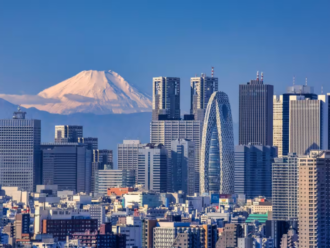Summer in Australia is a mixture of joy and despair. Alongside barbeques on the beach and playing cricket the sky often turns black from the bushfires that rage across the country.
Such events are an annual occurrence, causing widespread destruction. Indeed, 10 people lost their lives and 170 homes were destroyed in December when fires engulfed almost 1.5 million square kilometres of bushland. Above average temperatures and below average rainfall were blamed.
Climate change is lighting the spark on Australia’s bushfires and lives are being lost, but its impact on the natural world is creating other threats to life.
Extinction list
A chubby frog, a broad-toothed rat and various types of crayfish are among the 144 animals and plants that were added to Australia’s threatened species list last year, bringing the total to more than 2,200. The list is growing due to habitats coming under threat from the destruction of land in the country, which include bushfires.
This is a big issue as animals and plants are part of the natural capital that supports human life. Water, soil, coral reefs and bacteria are also elements of the ecosystem that provide us with food, water, fresh air and medicine. The loss of this natural capital can lead to famine, drought, poverty and lower life expectancies.
Yet the biggest threat to such biodiversity is humankind, specifically in how we manage land. Ploughing fields to grow food, for example, may mean species of animals, plants and microbes are forced out of their natural territories or face extinction.
Pollution (including fertilisers), over-fishing, hunting, animal farming and human construction are other threats to the ecosystem, which could result in the loss of food and medicine as well as increasing the risk of people catching diseases from animals which have migrated into new regions.
We have already reached the point where we are exploiting nature faster than it can renew itself, according to the UN’s Intergovernmental Science-Policy Platform on Biodiversity and Ecosystem Services.
Natural defence
Climate change is another aggressor. Rising temperatures, changing rainfall patterns, extreme weather events, droughts, floods and bushfires are affecting ecosystems by changing what can grow and live in certain places.
So some plants, for example, are unable to flourish, while rising temperatures have seen the number of coral reefs almost halve in the past 150 years.
Yet a vibrant ecosystem is the natural defence against the impact of climate change. Plants, the ocean and soil remove carbon from the atmosphere, but deforestation, for example, transforms carbon sinks into carbon emitters. It needs to be the other way around.
It’s not just about trees. The World Bank says that 85% of wetlands, such as carbon absorbing salt marshes, have disappeared. Pollution, agriculture and freshwater being diverted elsewhere are among the reasons why.
Such loss is a huge dent in the fight against global warming with estimates suggesting that natural capital can provide 37% of the mitigation needed to achieve the Paris Accord’s 1.5-degree warming target by 2030, says Lee Backhouse, a senior responsible investment manager at Scottish Widows. “We have become more aware as a society of the connection between nature and climate change,” he adds. “We know that the two are inextricably interlinked, are mutually reinforcing one another.
“We know that the environmental processes that biodiversity supports, ultimately support the fight against climate change.”
So investors are not going to achieve carbon neutrality if they ignore nature. “We need to bring nature in as part of that, because it is a major tool in reaching our decarbonisation goals, particularly when we consider that 37%.”
The cost of nature loss
The impact of natural capital loss stretches beyond the environment. There are serious consequences with elements of natural capital being crucial to the global economy. Indeed, more than half (55%) of the world’s output, around $58trn (£46trn), is dependent on nature, according to PwC.
The World Bank believes that global GDP could lose $2.7trn (£2.1trn) by 2030 if ecosystem services collapse, such as pollination, carbon storage and timber provision.
However, it is some of the poorer countries in the developing world that could suffer the most if their ecosystem is not functioning as it should with the hit to GDP estimated at 10% a year.
One of the reasons is that the natural world provides people with a living, such as tourism. It can also give them a home. According to the World Bank, 1.6 billion people rely on forests for their livelihoods, while they are home to around 300 million people.
So there are also social benefits to having a vibrant ecosystem. “You can’t understate the social impact [of nature loss],” Backhouse says. “There is a huge drain on society as a result of biodiversity loss.”
Backhouse says that the social aspect is not just about earning a livelihood but being able to thrive in a particular area.
“We are incredibly lucky in the UK in that we don’t experience wild events. We get bad weather, we get bad storms, but we are not at the forefront of the battle whereby the ecosystems that we depend on to live within are being impacted.
“So it is not just the earnings side, it is the continued survival of communities, because of the increased risk as a result of extreme weather as a result of the loss of a particular material that we might depend upon for survival, as opposed to earning,” he adds.
Hard targets
The world has had a difficult time in trying to protect its ecosystem. It failed to meet all of the 24 Aichi Biodiversity Targets, the deadline for which expired four years ago. The targets included reducing pollution and deforestation, while protecting 10% of the oceans.
A lack of financing was blamed. Indeed, the biodiversity funding gap is believed to be an average of $711bn (£561bn) a year between 2019 and 2030.
So institutional capital is needed to halt deforestation and pollution while protecting biodiversity against its other threats, providing greater access to freshwater and growing food more sustainably.
Despite climate change taking center stage in institutional portfolios, pension schemes are factoring natural capital into their portfolios. One such scheme is the £900m Scottish Borders Council Pension Fund. In January, it invested an undisclosed amount in a timberland fund. This is its first allocation to natural capital and aims to sell land and timber as well as carbon offsets.
Meanwhile, the £35bn Access pension pool has launched a global timberland mandate. The initial size of the portfolio will be around £300m.
Scottish Widows’ approach has been to create a Global Environmental Solutions fund, which pushes the insurer’s focus beyond climate change. “We are seeing an opportunity in the technological innovation that supports the preservation and restoration of biodiversity. Companies that are focusing on addressing pollution issues, not just those that are driving carbon dioxide down,” Backhouse says.
A benefit of investors looking at funding the transition is that the investment universe is huge, he adds. “Because economies are so dependent on nature, if you want to invest in the transition, the entire global market is pretty much an open field because every company needs to transition, every company has to address their environmental impact,” Backhouse says.
High interest, low coupons
Then there are debt-for-nature swaps, which is where institutional capital encourages corporates to invest more in protecting the natural world in exchange for paying less interest on their borrowings.
In May 2023, Ecuador agreed a refinancing that will shrink the interest payments on its debt by more than $1bn (£793m) if it steps up efforts to support marine conservation around the Galápagos Islands.
The waters around the Islands are home to 3,000 species, 20% of which cannot be found anywhere else on earth, and inspired Charles Darwin’s theory of evolution. But climate change and overfishing are putting pressure on this ecosystem.
Under the terms of the debt-for-nature swap, Ecuador will protect the Galápagos’ marine reserves and promote sustainable fishing over the next 18 years to prevent habitat loss.
Barbados and Belize have agreed similar deals.
Legal & General Investment Management (LGIM) was an investor in the Ecuador deal. “Our financial systems are embedded within the natural environment, but the models that we use ignore it,” says Wendy Walford, head of climate risk at Legal & General.
“We’re extracting from the natural environment faster than it can replenish itself. That’s when the financial models need to be reappraised to understand how we make sure that we operate in a sustainable long-term way.”
It is believed that the debt-for-nature market could soon exceed $800bn (£632bn), Bloomberg says, highlighting that putting a price on nature conversation is increasing interest in this space.
Risks and opportunities
Despite growing interest, barriers remain to investing in preserving natural capital. One of which is the lack of data.
“Being able to understand the impacts and dependencies of a financial portfolio on the natural environment means really detailed disclosures,” Walford says. “That’s where the Taskforce on Nature-related Financial Disclosures (TNFD) comes in.”
The TNFD published its framework for nature-related risk management and disclosure in September to help organisations report on their natural capital risks.
“They’ve been doing some great work on setting out what is decision-useful disclosures for an investor to understand those exposures,” Walford says.
Perhaps this framework could encourage more institutional investors to factor biodiversity into their investment decisions.
Backhouse says that those who decide to look at this issue in their portfolio, need to become “nature smart”.
“To protect biodiversity, we need to understand biodiversity,” he says. “We need to understand how it all plays out within the natural world.
“We need to break down what natural capital is to develop that critical capability to understand nature in order to identify the dependencies and impacts within a portfolio.”
Backhouse adds that this lack of understanding of these risks is a barrier to pursuing opportunities in this space. Natural capital loss is a big issue, therefore some big opportunities will present themselves to investors as more and more people realise how crucial biodiversity is to fighting climate change.





Comments